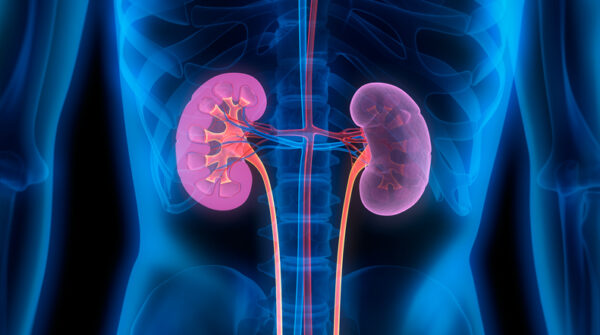
A serious threat to our health care system – kidney disease – lurks among millions of Americans. When this disease progresses to kidney failure, intensive treatment is required multiple times a week and costs tens of thousands of dollars per year per individual. But, most troubling is nine out of 10 adults with this condition aren’t even aware they have it.
Kidney disease impacts 37 million Americans, roughly equal to the entire population of California, and takes more lives annually than prostate or breast cancer. Most Americans don’t realize they have kidney disease until it’s too late for intervention. Although one in three adults are at risk of developing chronic kidney disease, early stages of the disease have few, if any, symptoms.

With the Rise of AI, What IP Disputes in Healthcare Are Likely to Emerge?
Munck Wilson Mandala Partner Greg Howison shared his perspective on some of the legal ramifications around AI, IP, connected devices and the data they generate, in response to emailed questions.
If left untreated, chronic kidney disease (CKD) can progress to end-stage renal disease (ESRD) or kidney failure, an irreversible condition that requires routine dialysis treatment or a kidney transplant to sustain life. What’s more, minority groups are more likely to experience the devastating progression of kidney disease. Compared to white Americans, African Americans are more than four times as likely to develop ESRD, while Latinos are more than 1.3 times as likely.
It’s evident that kidney disease is a public health issue deserving of more attention. Yet, our healthcare providers lack the resources needed to improve care options for those living with kidney disease. With more than 130,000 new patients diagnosed with ESRD each year, it’s beyond time for policymakers to help address this crisis.
The first step to mitigate the silent yet devastating impact of kidney disease is to prioritize awareness, education, and screening. Policymakers must work to increase access to the Medicare Kidney Disease Education Benefit and expand the Medicare annual wellness benefit to include kidney disease screening. These reforms will catch disease at earlier stages and equip patients to better recognize their risk.
Funding for kidney disease innovation and therapy research pales in comparison to other diseases. To bridge this gap, the Medicare ESRD payment system needs reform that will incentivize innovation in the prevention, diagnosis, and treatment of kidney disease. Investment would help modernize our kidney care infrastructure and create a long-term payment pathway for new drugs, biologics, devices, and other technologies.
But it is not enough just to support research if we want to save lives. Currently, Medicare seeks to incentivize innovation with a two-year payment add-on for new devices and drugs. However, after that period, the program does not adjust payment rates to reflect increased costs of continuing to provide those innovations. It is critical that Medicare Advantage (MA) plans, which cover more than 40 percent of individuals receiving dialysis, be directed to recognize innovations and adequately reimburse for them.
Kidney patients rely upon a well-trained workforce of healthcare professionals and technicians to receive life-sustaining dialysis treatments multiple times per week. The workforce crisis has been particularly devastating for kidney care, as relatively stagnant Medicare rates have not kept pace with increasing labor costs.
Medicare and Medicaid serve as the primary payers for kidney care, but payment rates are insufficient for providers to meet demand and increase salaries for nurses and dialysis technicians. The Centers for Medicare and Medicaid Services (CMS) and Congress could help by reconciling inflation predictions with actual inflationary costs and adding the difference back into Medicare rates.
Moreover, the nephrology labor crisis is particularly pronounced in rural and underserved areas. To help alleviate these labor challenges, Congress should add nephrology health professionals to the National Health Service Corps Scholarship and Loan programs. Doing so would not only provide young people with an opportunity to gain experience in nephrology but would also help address access challenges faced by underserved kidney patients.
Congress can also address gaps in access by providing Medigap coverage to all ESRD patients, regardless of age, to help them plan and prepare for the cost of Medicare services.
It’s clear that the needs of the kidney community can’t wait. Individuals living with kidney disease deserve quality care, choice, and equitable access, so they can continue to live full and productive lives.
Thankfully, Representatives Carol Miller (R-WV) and Terri Sewell (D-AL) have introduced The Chronic Kidney Disease Improvement in Research and Treatment Act (H.R. 5027), which would implement these policies and payment models to serve our nation’s kidney patients across the entire continuum of their disease. It’s imperative that lawmakers rally behind this bipartisan effort to delay kidney disease progression and bring much-needed advancements to our healthcare system.
Photo: peterschreiber.media, Getty Images
John P. Butler is chair of Kidney Care Partners and CEO of Akebia Therapeutics. Kidney Care Partners (KCP) is a coalition of 35 organizations, comprised of patient advocates, dialysis professionals, care providers, researchers, and manufacturers, dedicated to working together to improve quality of care for individuals with Chronic Kidney Disease.














